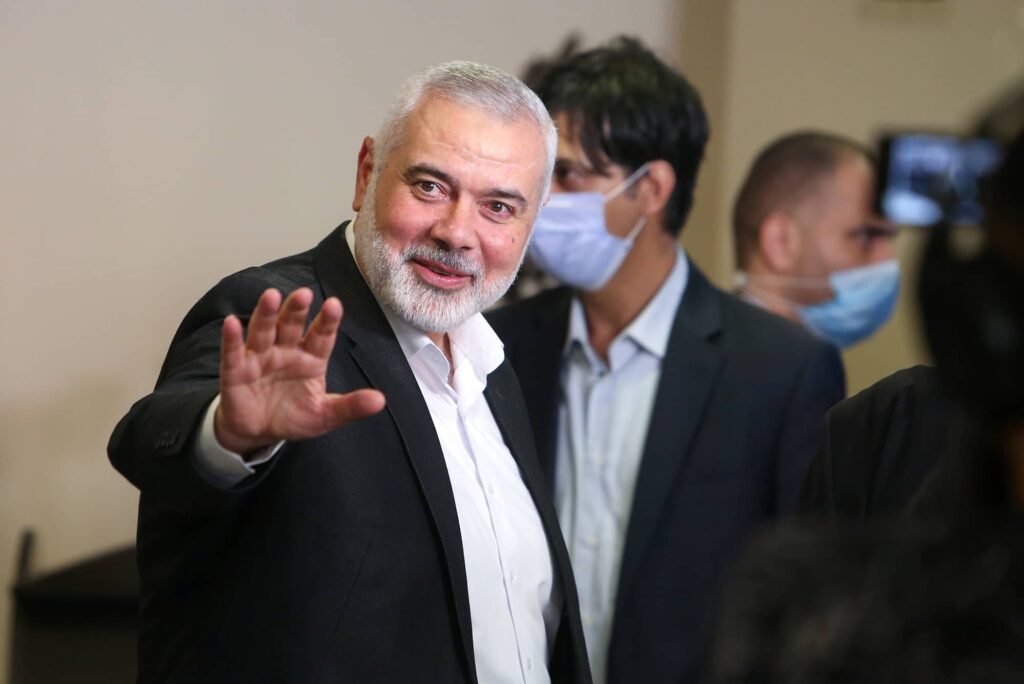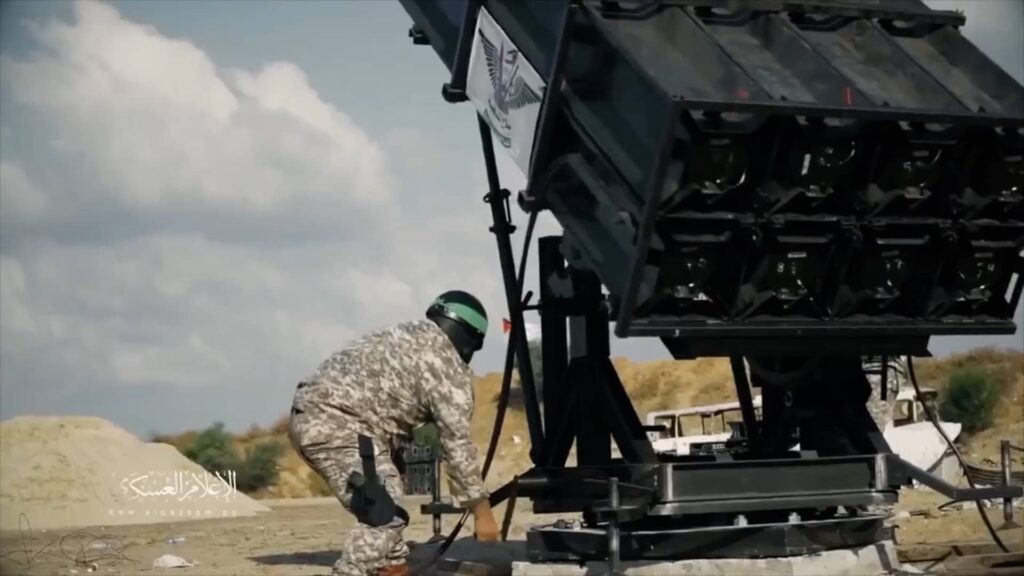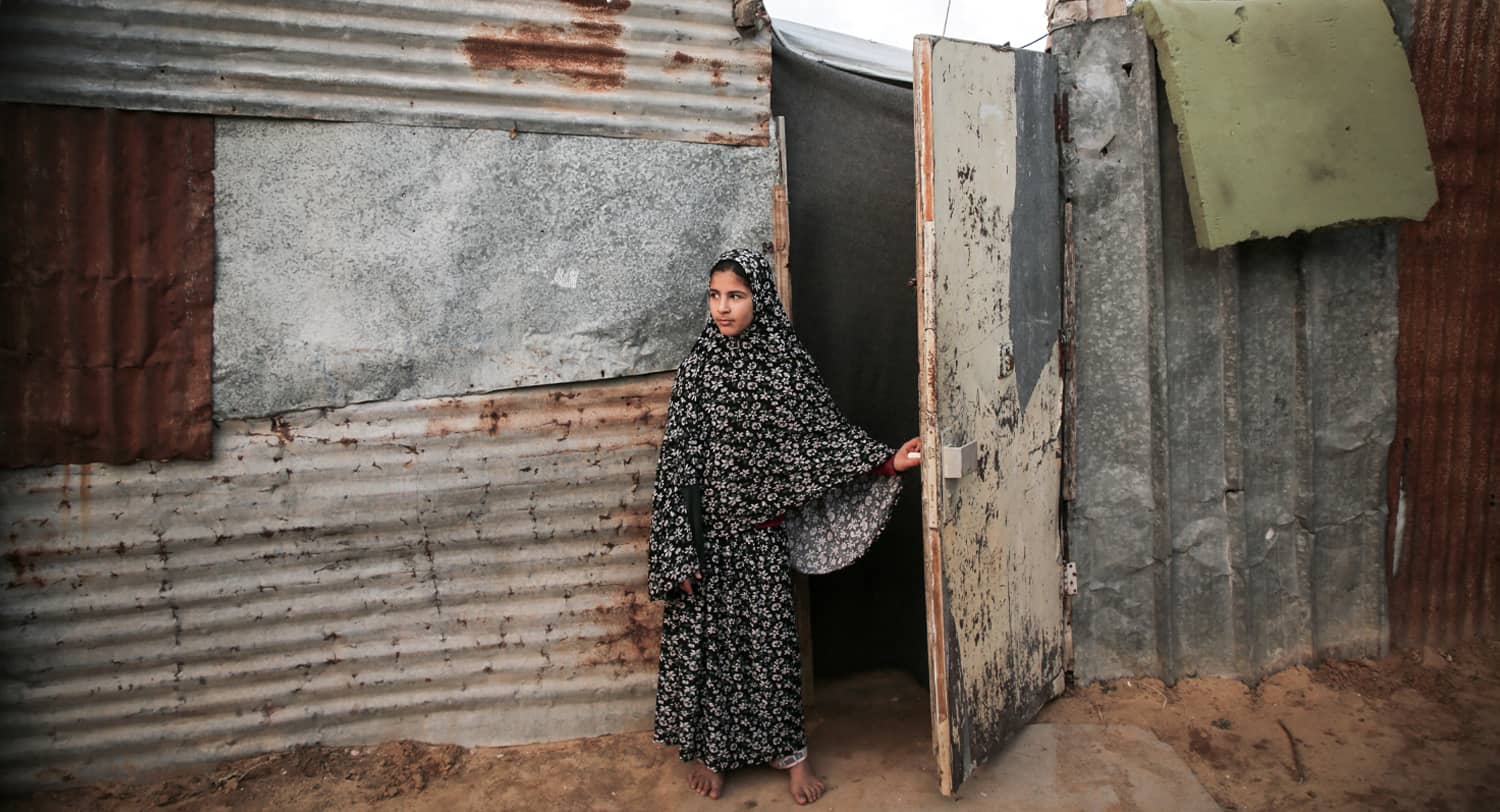On the night of January 25, 2006, after Hamas won a majority of the seats in elections for the Palestinian Legislative Council, its political leader Ismail Haniya told the press he had requested a meeting with Palestinian Authority Chairman Mahmoud Abbas to discuss the future of the Palestinian government. “Hamas will cooperate with everybody for the benefit of all the people,” he was quoted in The Guardian the next day.
17 years later, when Hamas launched a horrific attack, it’s clear that the only beneficiary of this victory was Hamas itself. The rest of the Palestinian people have lost.
Jihad and Corruption
In 2006, Hamas’ electoral win came just five months after the unilateral Israeli disengagement from Gaza. Hamas’ successful electoral strategy was based on two ideas: declaring a “jihad” against the rampant corruption of the Palestinian Authority; framing the Israeli unilateral disengagement from Gaza as a great victory for the “muqawama”– meaning armed resistance, which includes suicide bombings and other targeting of civilians (shooting and kidnapping) – that Hamas and other Palestinian organizations had been waging since October 2000.
Polls in 2006 showed that the Palestinian public did give Hamas most of the credit for disengagement. Some Palestinians also believed that Hamas leaders, who at that time lived in refugee camps and shared the burden of ordinary life, would be more decent than Fatah officials, who were infamous for their lavish lifestyles and nepotism.
As a journalist, I covered Gaza during that time for Israeli television’s Russian language Channel 9 as well as international media. The few months between the disengagement in August 2005 and parliamentary elections in January 2006 were characterized by turmoil and internal fighting between Fatah and Hamas, but they were also months of hope. Arab and some Western investors explored opportunities for hotel and college construction and residential developments. A Lebanese-Palestinian friend of mine decided to invest some money in a condo near the sea – he was now able to travel from Lebanon to Gaza via the Rafah border crossing with Egypt.

If all these plans were to materialize, many jobs would have become available to Gazans. Many were out of work since the beginning of the Second Intifada in 2000. The border crossing to Egypt was supervised by EU monitors, Gazans finally could come and go freely, and there was some cautious optimism that things might finally work out for Gaza.
But once Hamas managed to translate its post-Intifada popularity into political victory, these hopes were soon shattered. Despite its promises to “work for the benefit of the Palestinian people” the movement began to vigorously promote its own military-political project.
An interview with Hamas co-founder Mahmoud al-Zahar on al-Arabiya television on March 18, 2006 reflected the hardline opinion, and indicated that even after assuming power Hamas would remain Hamas – a hardcore fundamentalist terrorist organization. “If Hamas joins the government, it will do so on the basis of its economic, social, and political program, which does not cede even one centimeter and which [at best – K.S.] grants a long-term ceasefire, leaving the conflict unresolved, even though we will not be talking about a military struggle. The difference between Hamas and others is that Hamas is based on a religious foundation, which regards Palestine as Islamic land. If the present generation lacks the capability to carry this out, it does not mean that [this ideal] needs to be relinquished.”
The Quartet of the US, EU, UN and Russia required Hamas to forsake violence, recognize Israel and respect all previous agreements (the ”Quartet Conditions”) but, to no avail. Hamas could have earned international recognition, funds and influence, but it wasn’t interested. While during the first half of 2006 Hamas mostly refrained from firing rockets into Israel (while allowing other organizations to do so), on June 25, 2006 its fighters used a tunnel to sneak into Israel, ambush IDF soldiers, kill two and and kidnap another, Gilad Shalit (released in a prisoner exchange in 2011). In doing so, Hamas revealed that it had invested vast funds to prepare for subterranean warfare.
In retaliation, Israel bombed Gaza’s sole power station and launched Operation Summer Rain, and Hamas sprayed civilians in Southern Israeli cities with its rockets. In total, 1,247 rockets and 28 mortars were fired at Israel in 2006 (a rise from 574 mortar shells and 286 Qassam rockets in 2005).
Israel imposed economic sanctions and a blockade on the Gaza Strip in July 2007, following the violent takeover of Hamas – when hundreds of Fatah men as well as non-combatants were executed. Hamas now established its own rule in Gaza. Energy blackouts became common, and life in the Gaza Strip became even more difficult.
Israel’s blockade was aimed at Hamas’ attempt to arm itself with more sophisticated weapons, beyond their own home-made Qassam rockets. A quick glance at the number of rockets that were fired at Israel in the following years show that this strategy simply didn’t succeed: Iran found ways around the blockade. In 2010, Iran succeeded in smuggling 1,000 mortar shells and hundreds of short-range rockets into Gaza. Northern Sinai became Hamas’s “backyard” for operations and storage of arms.
Unemployment in Gaza reached 38 percent and poverty increased. Corruption allegations. such as the ones against the Palestinian Authority that had brought Hamas to power in 2006, were now heard out loud – against the leaders of Palestinian Islamist groups, some of whom quickly enriched themselves and sent their kids to study abroad. In 2014, Khaled Mashaal was reportedly worth 2.6 billion US dollars or more; his then deputy Musa Abu-Marzouq – 2 to 3 billion US dollars.
Ismail Haniyah, the current leader of Hamas outside of Gaza, and his sons are estimated to be worth 4-5 billion dollars. This man had called his fellow Palestinians to be satisfied with “olive oil and zaatar” during the first years of a blockade that was imposed in order to prevent Hamas from getting more weapons into the Strip. While Gaza became poorer, Hamas leaders deposited billions into their bank accounts.

Violence and Authoritarianism
When it became clear that the economic situation in the Strip was not about to improve, protests against Hamas broke out. In 2011, a few activists rallied in Gaza for Palestinian unity. They were arrested by Hamas police and then tortured. Human Rights Watch called for an investigation.
During the Israel/Hamas conflict of 2014, Hamas tortured and executed 23 Palestinians, including children, suspected of cooperating with Israel, according to Amnesty International. “In the chaos of the conflict, the de facto Hamas administration granted its security forces free rein to carry out horrific abuses including against people in its custody. These spine-chilling actions, some of which amount to war crimes, were designed to exact revenge and spread fear across the Gaza Strip,” the report said.
Anyone who wonders about the source of Hamas’s brutality on October 7 should know that the organization had years and years of practice – at home. “The Hamas leadership repeatedly calls for rights and justice for Palestinians in Gaza and elsewhere. But they do not always act in a manner that reflects respect for rights, justice and the rule of law. By failing to halt such grave violations, the Hamas authorities are dragging the name of justice through the mud and condoning these appalling crimes,” according to Amnesty International.
In 2019, protests erupted in the Strip against corruption and dire living conditions. In response, Hamas arrested dozens of protesters, beat activists and violently suppressed attempts by local media to cover the unrest. Hamas also targeted journalists (though it is suddenly very concerned for journalists’ safety now, when Israel is attacking its terror infrastructure).
It also persecuted, tortured and killed members of the LGBT community and jailed women for “moral offenses”.
Just this August, Hamas arrested nearly 400 people during another desperate protest against deteriorating living conditions. A 14-years old girl named Batol Abu-Salima disappeared following this wave of arrests.

Hamas’ raison d’être – Jihadi Violence
Hamas could have had it all. In 2005, Israel left Gaza and opened the Rafah border crossing with Egypt. If Hamas had met the conditions of the Quartet back then, investments would have poured in, unemployment would have shrunk and in the absence of violence Gazans could have also continued working in Israel, as they did prior to the Second Intifada.
Hamas could have invested in building state institutions and the economy, and thus promote Palestinian struggle for an independent state. Instead, Hamas increased its rocket attacks, kidnapped a soldier and then a few civilians and spent many billions of dollars in acquiring arms, manufacturing rockets and digging military tunnels. This self-serving move was intended to preserve authority in Hamas hands. While the terrorist organization was able to inflict some harm on Israel, during its 16 years of rule it completely mismanaged and ruined life in Gaza. They focused on a “forever war” with Israel, while neglecting everything else – water, sewage, electricity, employment, and every other sphere of civilian life. The terror organization now controls land, but it never evolved into a responsible governing authority, despite all of Israel’s assessments.
A word must be said about the Israeli government as well. For years it nurtured relations with Hamas and Qatar, while offering no real partnership with the Palestinian Authority beyond security cooperation – another self-serving move that allowed Prime Minister Netanyahu and his allies on the extreme right to avoid negotiations. Over the years many Gazans said to me that while they opposed Hamas, they were also appalled by what they perceived as “constant humiliation” of the Palestinian Authority and its leader, Mahmoud Abbas. Today, when Israel mulls again reinstating “a moderate regime in Gaza” when and if the Hamas regime is toppled, and fears violent protests in the West Bank, continuing the campaign against the Palestinian Authority seems even more dangerous.
Hamas’s destructive policies have harmed the Palestinians beyond imagination. The world should not let Hamas off the hook just because it skillfully uses the victim card. Its brutal and violent deeds do not bring Palestinians closer to a solution and do not advance independence. Israel, undoubtedly, needs to thoroughly revise its failed policies and strategies: it needs to eradicate the evil of Hamas, while strengthening what remains of its Palestinian partner – not just to find a quick fix for Gaza (no such quick fix exists), but to build the necessary trust, start from fresh and work towards a realistic and just solution.



